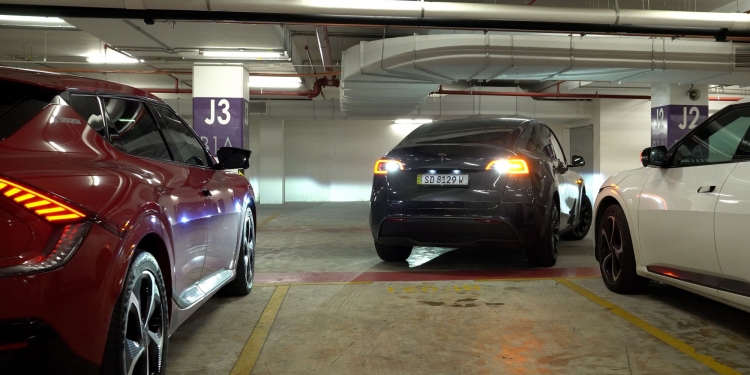Last month, Tesla rolled out its Autopark feature for Malaysian owners through an OTA software update (2024.44.3). Self-parking is among the features included in the RM16,000 Enhanced Auto Pilot add-on which Tesla buyers can opt in during the purchase of their Tesla Model 3 and the Tesla Model Y.
What made Tesla’s implementation of autopark different is that it solely relies on Tesla Vision. That means no ultrasonic sensors and how well the Tesla parks depends on what it can see from the array of optical cameras around the vehicle.
To find out if the Tesla Autopark feature is any good, we tested the feature on a Tesla Model Y Long Range and compared it to the BMW iX2 which has one of the best in class self-parking feature.
Tesla Model Y Autopark
Unlike other vehicles which scans for available parking from the side cameras, Tesla Autopark is able to detect multiple parking spots ahead of the vehicle. There’s no need to activate any parking/camera mode as the vehicle will start scanning as you drive slowly along the parking bays. Once you’ve spotted the parking lot you want, just simply tap on the box on the screen, then tap on Start to begin the auto park process.
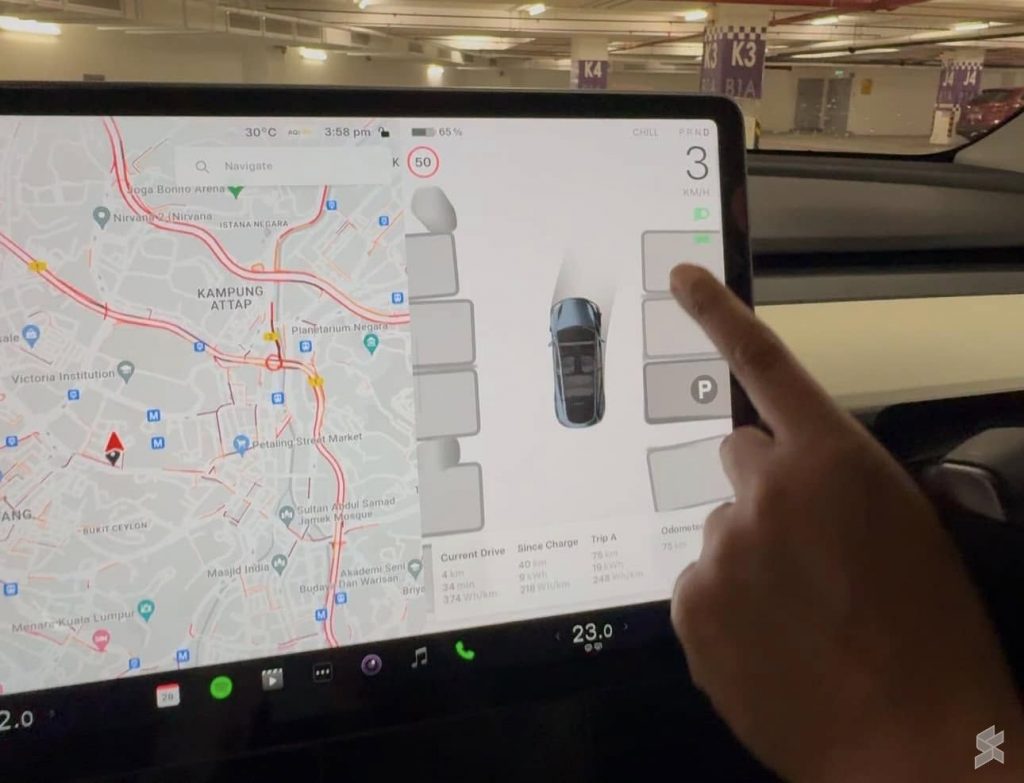
The Tesla will automatically turn on the indicator lights and it starts to maneuver very quickly. The way it turns the steering wheel and shifts gear between Reverse and Drive is instant, as if a real person is parking the car. The whole process is done autonomously and you just need to standby your foot on the brake pedal in case of an emergency.
We tried three rounds and the best time we got was 36.21 seconds from the point of tapping Start on the screen which is very impressive.
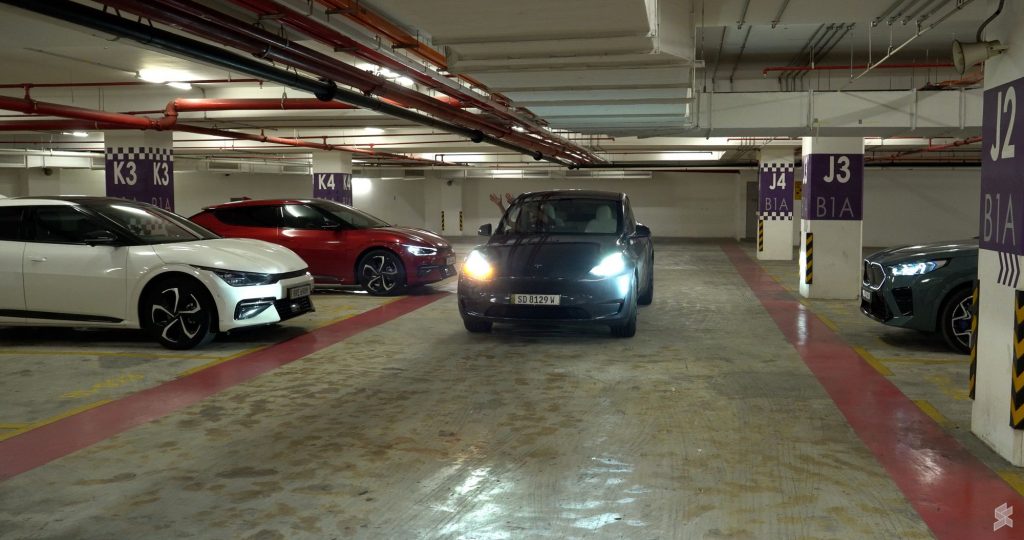
For this test, we parked the car between two other vehicles and there’s another vehicle parked at the opposing lot. For extra complexity, there are also two pillars nearby to avoid as well.
BMW iX2 Autopark
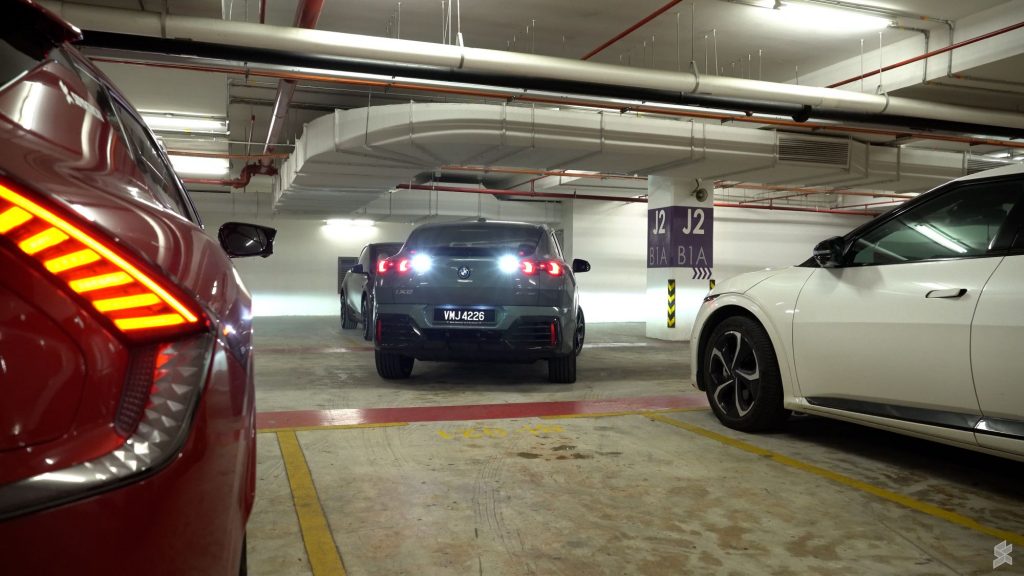
Next, we attempted the same parking as the Tesla with the BMW iX2. The biggest difference here is that it detects the parking bays one by one through the side cameras and you’ll have to drive a little bit closer to the side that you wish to park.
Once detected, you can either tap on the screen or press the right button on the steering wheel to initiate the parking assistant. The BMW managed to park quicker in 34.67 seconds upon initiating the process. However, it is worth noting that you can only start the self parking process after passing the preferred parking lot while the Tesla allows you to start the process ahead of it.
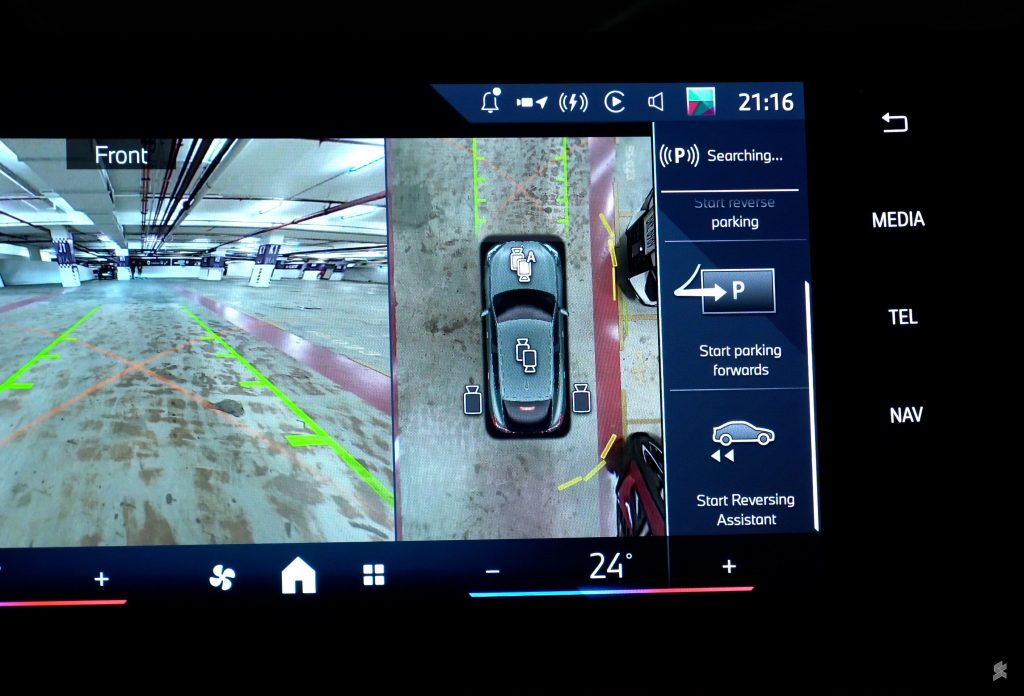
Similar to the Tesla, the BMW iX2 parked itself autonomously and you’ll just need to standby to step on the brake pedal to cancel if there’s an emergency. Another nice touch is that the BMW steering lights up to indicate that the car is taking control of the wheel.
Unlike the Tesla that could either do parallel parking and reverse parking, the BMW iX2 allows more self parking options such as forward parking and it can even help you reverse out from a carpark. This can be useful for drivers who struggle with complicated parking situations.
Another neat party trick from BMW is reversing assistant which is basically an “undo” function if you accidentally driven into a tight dead end alley. With this feature, the BMW is able to reverse out while retracing the last 50 metres. While the car controls the steering during this process, you’ll need to manage the brake and accelerator pedal yourself, while ensure that your speed is less than 10km/h.
What do we think of Tesla Autopark?
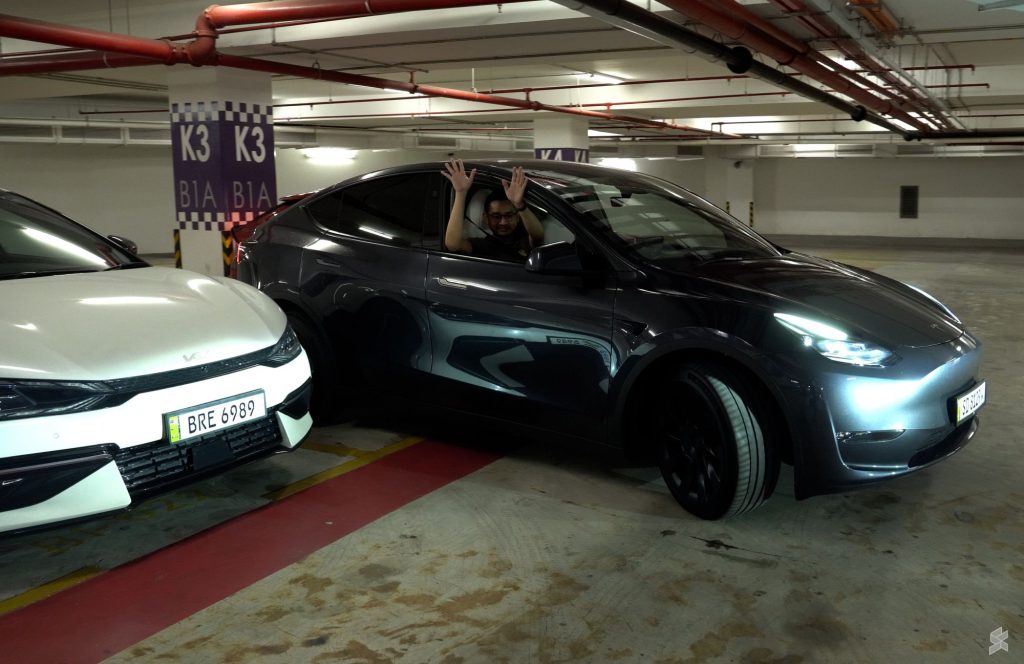
It is worth highlighting that the Autopark feature requires the parking lines to be clear in order for Tesla Vision to detect it as an available parking lot. Due to the lack of reverse sensors, it doesn’t park close enough to the rear as the Vision-based system leaves a generous gap for safety.
Even when we try to close the gap with the dumb summon feature on the phone, it doesn’t back up closer to the wall, leaving ample of space to comfortably remove your bags from the boot. With Tesla Vision, the car refuses to reverse close enough for the rear wheels to touch the rubber stopper and we had to reverse ourselves manually to get closer at an EV charger.
However, due to the sheer responsiveness and its ability to detect the parking lot ahead of us, we find ourselves using Tesla Autopark more frequently than usual. We’ve tried it a number of times throughout our journey from Kuala Lumpur to Ipoh to Penang and back, and it does the job remarkably well, provided that the parking lots are detected in the first place.
Besides Autopark, the RM16,000 Enhanced Autopilot package also includes Auto lane change, Navigate on Autopilot, Dumb Summon and Actual Smart Summon (ASS). At the time of writing, ASS is still not available in Malaysia.

